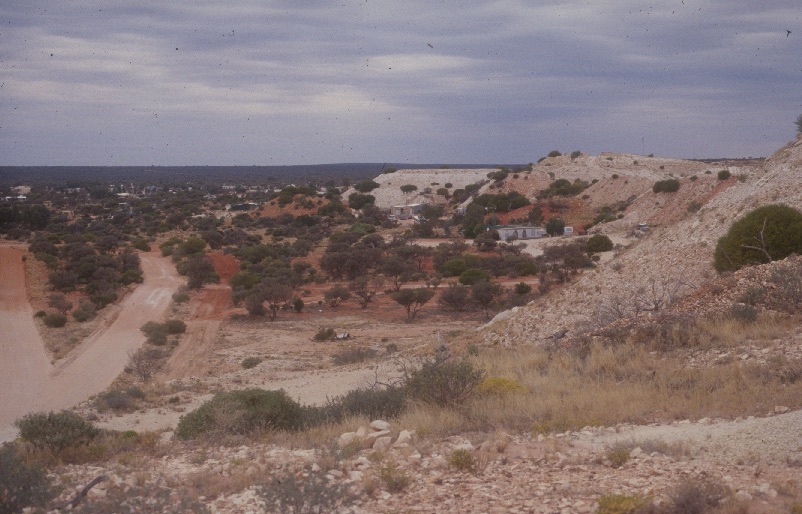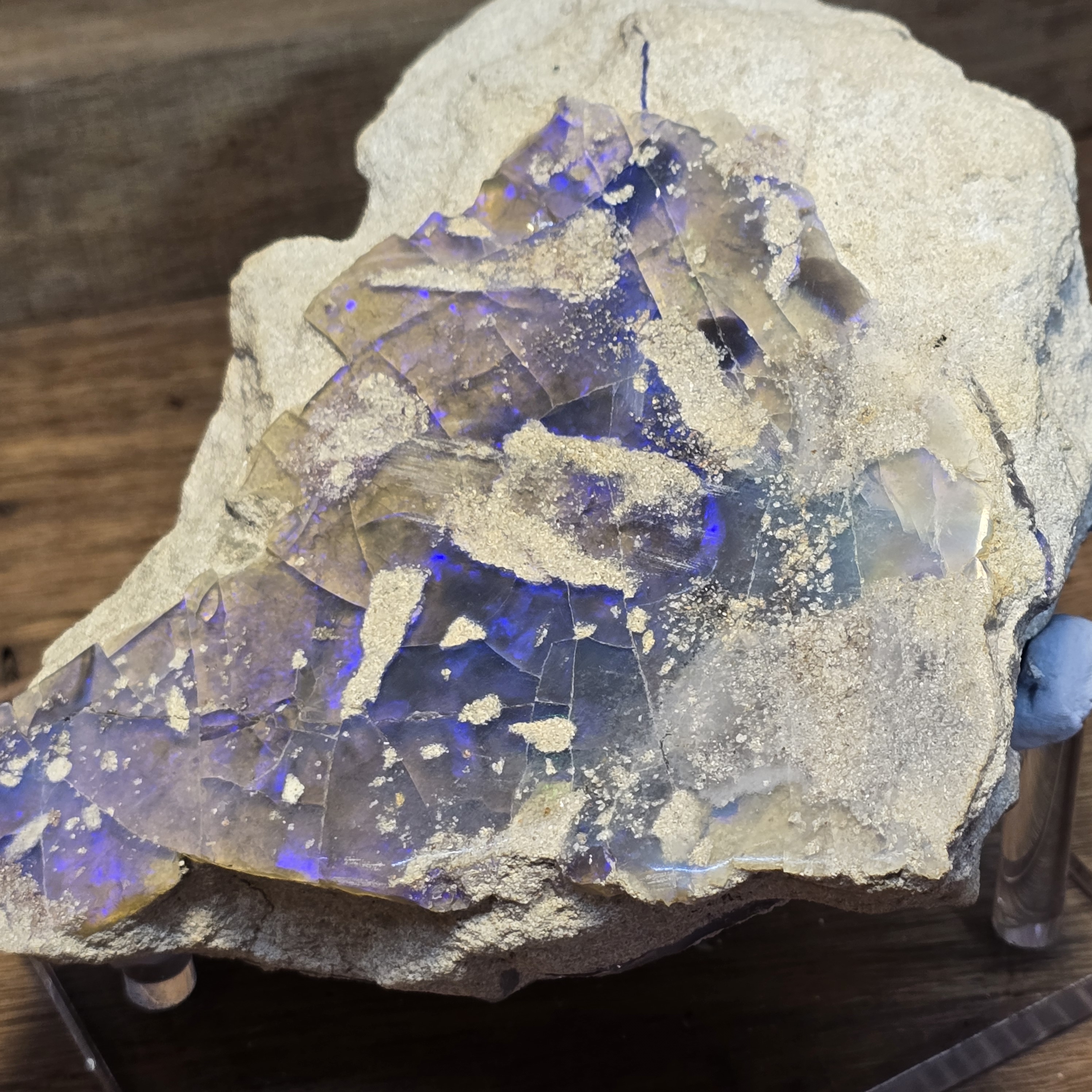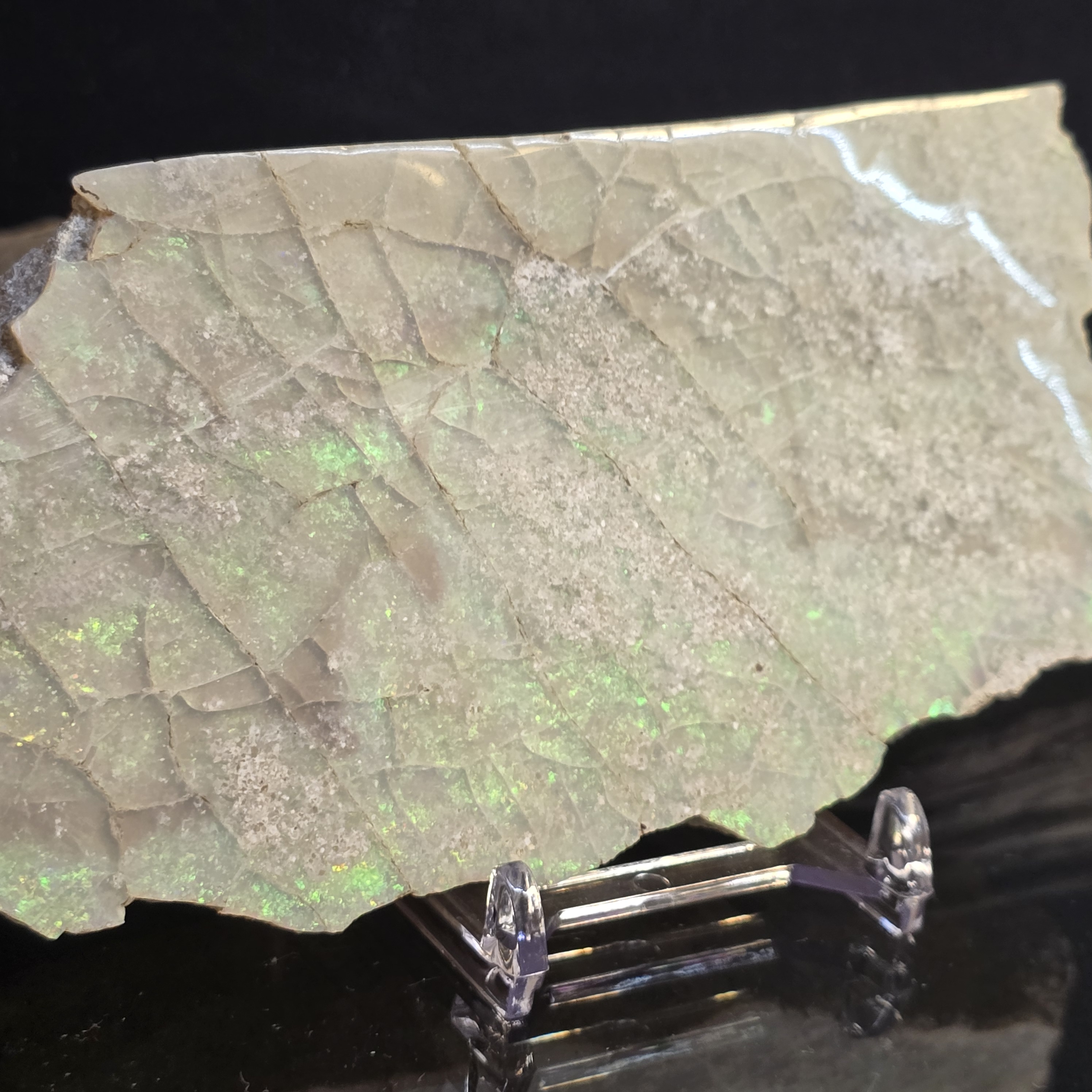Mintabie, SA
Just 270 kilometres north of Coober Pedy, nestled in the limestone plains of Central Australia, lies the remote opal field of Mintabie—once a bustling mining town and now a symbol of resilience in Australia's outback. Known for producing some of the finest black, light, and white opal, Mintabie has a rich, complex legacy tied to both its geological wonders and its unique community.

Brief History of Mintabie
Although opal was first discovered in Mintabie in the 1930s, it wasn’t until 1978 that gem-quality black opal was found by Croatian miners from Coober Pedy. This discovery sparked a rapid opal rush, and by the early 1980s, Mintabie had grown into a thriving outback town with over 1,500 residents and millions of dollars in opal sales.
Built by miners in harsh conditions, Mintabie became known for its makeshift homes, strong community spirit, and some of the most durable opal in the world. But its location within the Anangu Pitjantjatjara Yankunytjatjara (APY) Lands led to ongoing legal and cultural conflicts.
After years of tension and government review, the town was officially closed in 2019. While the settlement is gone, mining continues on a smaller scale, with dedicated miners still working the Mintabie opal field—one of Australia’s last and most unique sources of opal.
Types of Mintabie Opal

Mintabie opals are renowned for their exceptional durability and vivid color play. Unlike the clay-based opals of Lightning Ridge, Mintabie opals form in hard sandstone, making them highly resistant to crazing and wear—some say that the opal are even strong enough to scratch agate.
This legendary Australian opal field produces a full spectrum of opal types, including rare black opal with intense red and green flashes, luminous light opal, vibrant white opal, and strikingly clear crystal opal. Each variety showcases Mintabie's signature brilliance and durability.
Mintabie rough opal is easily recognized by its natural setting—encased between coarse sandstone layers—making it distinct among global opal fields. Known for quality, strength, and color, Mintabie opal continues to attract gem collectors and designers worldwide.
The Future of Mining in Mintabie
The future of mining in Mintabie, South Australia, is showing renewed promise, driven by rising demand for opals and interest in sustainable resource development. Known for its high-quality black opals, Mintabie could see a revival through modern mining technologies and ethical sourcing practices. As stakeholders work to balance economic growth with environmental protection and Indigenous land rights, Mintabie has the potential to re-emerge as a key player in Australia's mining sector—offering new opportunities for investment, employment, and responsible regional development.
